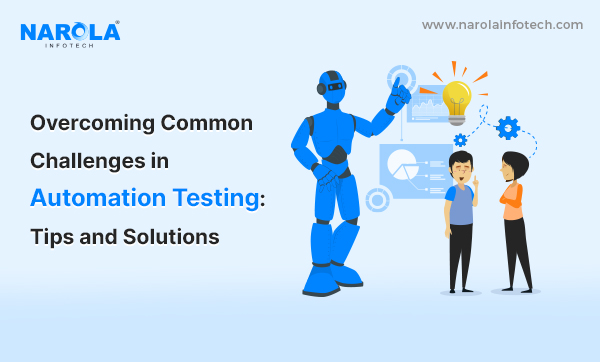Automation testing is a game-changer in software development, but it's not without its challenges. Here are four common hurdles and their solutions:
1. Test Maintenance Nightmare: Keeping automation
scripts up-to-date can be a headache. Solution: Regularly review and refactor
scripts, use version control, and adopt a modular framework for easy updates.
2. Dynamic UI Elements: Elements that change
dynamically can disrupt test scripts. Solution: Implement robust locators,
waits, and dynamic XPath expressions to handle dynamic elements gracefully.
3. Data Management Dilemmas: Managing test data
efficiently can be tricky. Solution: Create a separate data repository, use
parameterization, and consider data-driven testing for versatility.
4. Flaky Tests: Unpredictable test results can
erode confidence. Solution: Reduce test flakiness by improving synchronization,
reducing dependencies, and monitoring system stability.
Continuous Improvement Strategies for Test Automation
Challenges.
Test automation is a journey, not a
destination. Here are some strategies for continuous improvement in tackling
test automation challenges:
1. Regular Training: Keep your team updated with
the latest tools and techniques through training and workshops.
2. Collaboration: Foster collaboration between
developers, testers, and other stakeholders to align automation goals with the
overall development process.
3. Metrics and Monitoring: Implement metrics to
track test execution, identify bottlenecks, and make data-driven decisions for
improvement.
4. Test Strategy Review: Periodically revisit your
test automation strategy to adapt
to changing requirements and technologies.
5. Test Environment Management: Maintain a
stable and realistic test environment to ensure reliable test results.
6. Continuous Integration/Continuous Deployment
(CI/CD): Integrate
automation into CI/CD pipelines for faster feedback and quicker bug resolution.
7. Test Reporting and Documentation: Create detailed test reports and documentation to facilitate communication and troubleshooting.
Read more:
Overcoming
Common Challenges in Automation Testing: Tips and Solutions
The
Ultimate Guide to Software Automation Testing: Strategies, Tools, & Best
Practices
What
is Automated Testing: Benefits, Tools and Services

Comments
Post a Comment